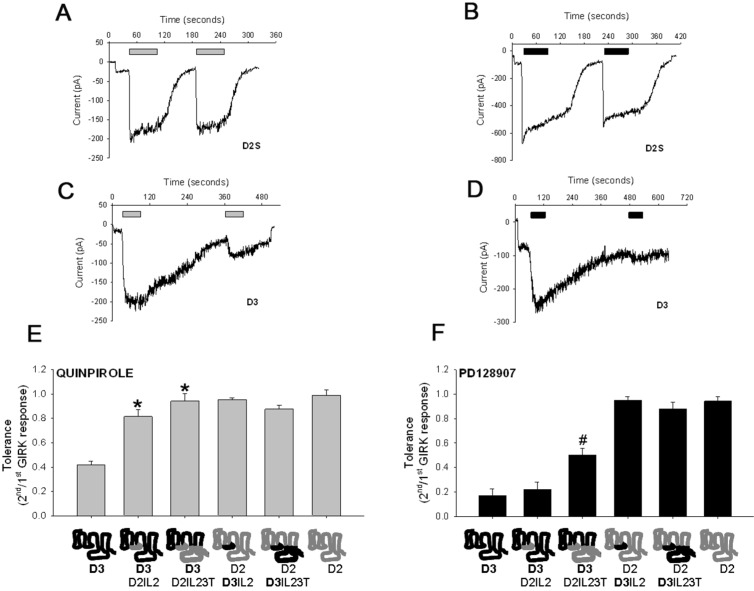Figure 1.
Different structural domains determine the D3 receptor tolerance induced by quinpirole and PD128907. Representative whole cell voltage clamp recordings obtained from AtT-20 cells stably expressing either the human D2S (A and B) or D3 (C and D) dopamine receptors. The cells were held at −65 mV and inward GIRK currents in 30K-ES induced by 100 nM quinpirole (gray; A, C, and E) or 100 nM PD128907 (black; B, D, and F) measured. The agonists were applied for ∼60 s at indicated times. Tolerance property defined as the ratio of second/first agonist-induced GIRK response was determined for quinpirole (E) and PD128907 (F) in AtT-20 cells transiently transfected with either wild type D3 or D2S receptors or various chimeric receptors. Compared to wild type D3 receptor, quinpirole does not induce tolerance in the D3D2IL2 and D3D2IL23T chimeric receptors; *P < 0.01, ANOVA (Holm’s-Sidak post hoc test). PD128907-induced tolerance in the D3D2IL23T chimeric receptor is significantly attenuated compared to wild type D3 receptor or the D3D2IL2 chimeric receptor; #P < 0.01, ANOVA (Holm’s-Sidak post hoc test). The bars represent the mean values ± SEM (n = 10–12 cells).

